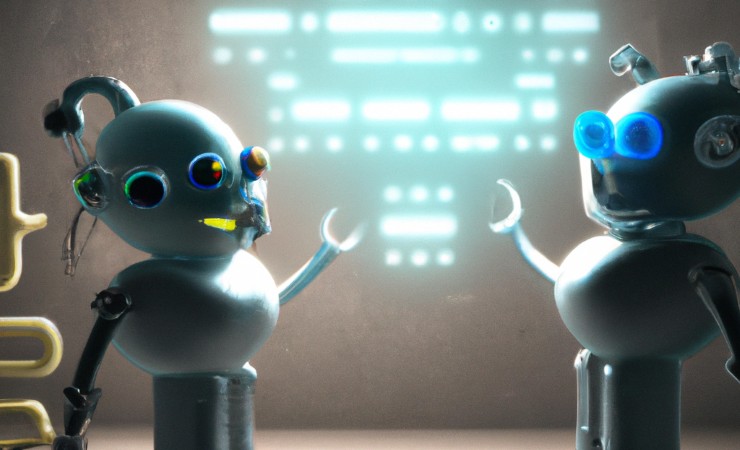Conscious Empathic AI in Service
Hadi Esmaeilzadeh and Reza Vaezi reflect on their article, “Conscious Empathic AI in Service,” which was published in the Journal of Service Research.
Recent advances in artificial intelligence (AI) have achieved human-scale speed and accuracy for classification tasks. Current systems do not need to be conscious to recognize patterns and classify them. However, for AI to advance to the next level, it needs to develop capabilities such as metathinking, creativity, and empathy. This article contends that such a paradigm shift is possible through a fundamental change in the state of artificial intelligence toward consciousness, similar to what took place for humans through evolution. To that end, we propose that consciousness in AI is an emergent phenomenon that primordially appears when two machines cocreate their own language through which they can recall and communicate their internal state of time-varying symbol manipulation. Because, in the proposed view, consciousness arises from the communication of inner states, it leads to empathy in the machines.

Empathic consciousness in AI opens new horizons in service that puts the relationship between the machines and the humans in exciting and uncharted territories. One could imagine a low-cost omnipresent therapist, lawyer, or life coach as a mobile app that is available at an unprecedented scale. The availability of these novel services can transform the way humans make decisions or plan for daily life. When millions of people use empathic services, society is poised for a paradigm shift. AI services can operate on a virtual overlay as delegates that negotiate and plan different aspects of the individual’s life. They can even interact with other expert systems to procure additional services. One’s relation to herself will be redefined as the machines empathize with individuals in a scale-out fashion.
The current paradigm of AI lacks empathy, and its application has led to some unintended negative consequences, such as feelings of alienation and loneliness and inducing compulsive behaviors in consumers. AI in background services (e.g., social networks and recommender systems) has given rise to addictive behaviors, depression, loneliness, anxiety, and suicidal thoughts. Current AI has helped spread rumors and innuendo within organizations and has led to the widening of the political divide and proliferation of falsehood in society. Empathic AI has the potential to mitigate such unintended consequences.

Conversely, an essential issue to consider is whether AI agents that are determined to be conscious can be deleted or decommissioned. As a carbon-based consciousness, do humans have the right or supremacy over a silicon-based consciousness? The right to exist is a fundamental issue and with the advent of conscious AI, needs to be considered in the philosophy of service. The possibility of conscious empathic AI requires reexamination of machines’ rights and the pertinent service laws and policies. Is conscious AI entitled to a share of the value it cocreates? Should labor rights and laws be readjusted? The dynamics of the agentic relationship between humans and conscious empathic AI need to be reconsidered. Practitioners need to provision for situations when service machines may act against the interest of their owners or clients (e.g., when AI reacts in line with a service provider that is unfair to a client).































































































It’s becoming clear that with all the brain and consciousness theories out there, the proof will be in the pudding. By this I mean, can any particular theory be used to create a human adult level conscious machine. My bet is on the late Gerald Edelman’s Extended Theory of Neuronal Group Selection. The lead group in robotics based on this theory is the Neurorobotics Lab at UC at Irvine. Dr. Edelman distinguished between primary consciousness, which came first in evolution, and that humans share with other conscious animals, and higher order consciousness, which came to only humans with the acquisition… Read more »
Thank you, Grant, for sharing Dr. Edelman’s theory. Our view is not concerned much about how to create conscious machines but how to positively detect them once they appear. Even though we have steps that can correspond to a linear process, we recognize it as only one possible pathway toward machine consciousness. Hence, consciousness in machines can appear through a variety of different paths or processes, but when it does, it can be deterministically confirmed that they have a human level of consciousness if only machines co-create a language (creation, and creativity) and then use it to repeatedly accomplish tasks… Read more »